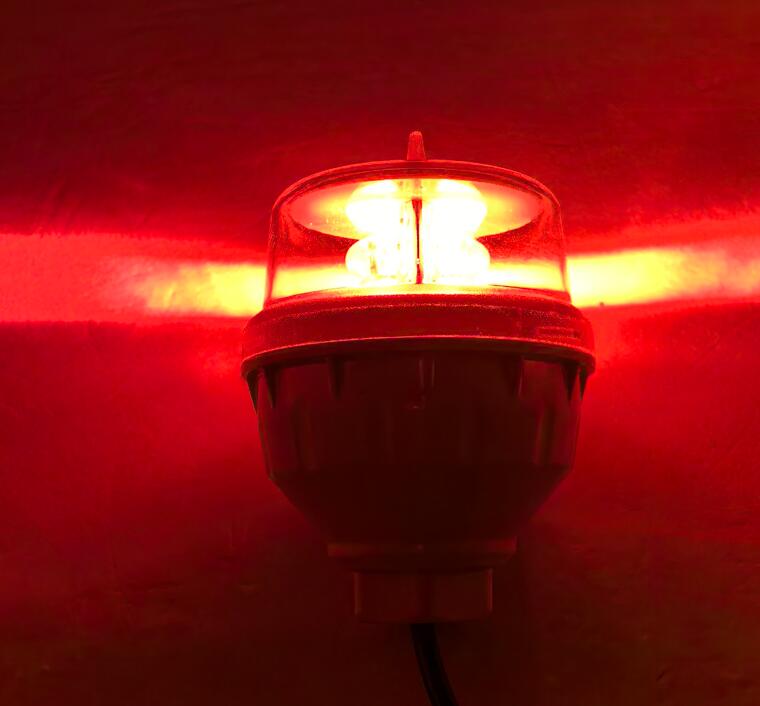FAA Type L 810: The Foundation of Low-Intensity Obstruction Lighting
In the intricate landscape of airspace safety, obstruction lighting plays a vital role in protecting aircraft from hazards that extend into navigable airspace. Among the many classifications of obstruction lights established by the Federal Aviation Administration (FAA), the FAA Type L 810 stands out as the most widely used low-intensity light. Designed specifically for marking structures that pose potential collision risks at lower altitudes, the L-810 light is a simple yet indispensable component of aviation infrastructure.
Understanding FAA Type L 810
FAA Type L 810 refers to a steady-burning, low-intensity red obstruction light used primarily on structures up to 150 feet (approximately 45 meters) in height above ground level (AGL). These lights serve as visual indicators for pilots during nighttime or periods of reduced visibility, helping them identify and avoid obstacles such as:
Communication towers
Utility poles
Wind turbines
Rooftop antennas
Water tanks
Tall buildings near airports
As part of the FAA Advisory Circular AC 150/5345-43, the L-810 light is regulated for design, photometric output, and operational performance.

Why FAA Type L 810 Matters
Although low in intensity, FAA Type L 810 lights have a major impact on aviation safety. Their purpose is to:
Mark low-level obstructions in or near flight paths
Comply with FAA and ICAO obstruction marking requirements
Minimize nighttime collision risk for both manned and unmanned aircraft
Guide helicopters and small aircraft flying at lower altitudes
They are especially critical in suburban and rural areas where terrain-following aircraft, such as helicopters, may encounter unmarked hazards.
| faa type l 810 |
Technical Specifications
To meet FAA certification, FAA Type L 810 lights must adhere to specific performance criteria, including:
Color: Aviation red
Intensity: Minimum 32.5 candela in the horizontal plane
Operation: Steady-burning at night only
| faa type l 810 light |
Coverage: 360° horizontal beam with a vertical beam spread of at least 10°
Operating Temperature: Must function in a wide range, typically -40°C to +55°C
Ingress Protection: IP65 or higher to resist water, dust, and weather exposure
They are powered by either AC or DC power sources and often incorporate photocell controls for automatic dusk-to-dawn activation.
LED Technology and FAA Type L 810
While early models of the FAA Type L 810 used incandescent bulbs, modern systems have shifted to LED-based solutions, offering several advantages:
Longer lifespan (often exceeding 50,000 hours)
Lower energy consumption
No filament breakage due to vibration
Instant-on capability
Reduced maintenance frequency
LED L-810 lights are now standard in new installations and retrofits, making them more cost-effective and environmentally sustainable.
Installation and Mounting Applications
FAA Type L 810 lights can be mounted in various ways depending on the structure type and local airspace regulations. Typical configurations include:
Single light installation on the highest point of a structure under 150 ft
Dual lights installed opposite each other for visibility from all directions
Grouped lights on complex structures with multiple obstruction points
Mid-level lighting for very wide structures (e.g., bridges or large rooftops)
Mounting hardware is typically corrosion-resistant and designed to withstand harsh environmental conditions, ensuring continuous performance year-round.
Use Cases in the Real World
The application of FAA Type L 810 lights spans several sectors:
1. Telecommunication Towers
Whether in urban or remote regions, cell towers must be marked with L-810 lights to ensure night-time visibility to aircraft.
2. Wind Farms
Wind turbines under 150 ft often use FAA Type L 810 lights for nighttime marking, especially in flat terrains where towers are hard to detect.
3. Airports and Heliports
Peripheral buildings, fuel tanks, and support structures within airport boundaries are marked with L-810 lights to guide taxiing aircraft and helicopters.
4. Urban Infrastructure
City buildings close to heliports or located in obstacle-sensitive zones require L-810 lights on their rooftops and antennas.
Compliance and Regulations
Using FAA Type L 810 lights ensures compliance with both national and international regulations:
FAA AC 70/7460-1M outlines when and where lights are required
ICAO Annex 14 provides international guidance for structure lighting
FCC tower registration often mandates obstruction lighting for antennas and communication structures
Site owners must submit obstruction evaluations and follow strict guidelines when installing these lights, especially near airports or designated flight routes.
Maintenance and Inspection
Despite being durable, FAA Type L 810 lights must undergo routine maintenance to remain compliant and functional:
Visual inspections to ensure lights are illuminated and undamaged
Lens cleaning to maintain maximum light output
Photocell testing to confirm automatic switching
Power supply checks for voltage stability and circuit integrity
Most LED models include self-diagnostic features or remote monitoring options, which alert maintenance teams in case of failure—helping avoid prolonged outages.
Environmental and Community Considerations
FAA Type L 810 lights, being red and low-intensity, are generally less intrusive in residential areas. Unlike medium- or high-intensity flashing white lights, these steady red beacons:
Minimize light pollution
Are less disruptive to wildlife
Have a softer presence in nightscapes
In environmentally sensitive areas or near protected zones, they are often the only type of obstruction light permitted.
Integration with Advanced Safety Systems
FAA Type L 810 lights can be part of broader safety and control networks, including:
Solar-powered systems for off-grid locations
Radar-triggered lighting to activate only when aircraft are nearby
Hybrid lighting configurations with L-864 (medium-intensity flashing red) lights for taller structures
These integrations enhance both efficiency and airspace awareness without compromising on FAA compliance.
The FAA Type L 810 light may be one of the simplest forms of aviation safety equipment, but its role is foundational in maintaining safe skies. Whether mounted atop a cell tower, wind turbine, or urban rooftop, these lights serve as quiet sentinels—guiding aircraft away from hidden dangers in the night.
With technological advancements, increased regulatory oversight, and expanding airspace complexity, the demand for reliable, efficient, and compliant obstruction lighting like the FAA Type L 810 will only grow. In every flash and glow, it stands as a beacon of safety for modern aviation.
